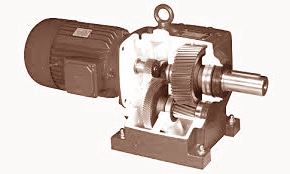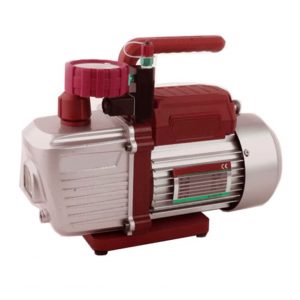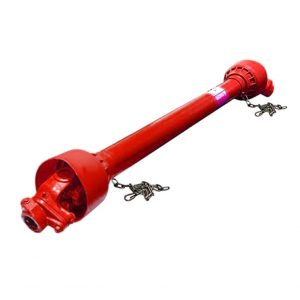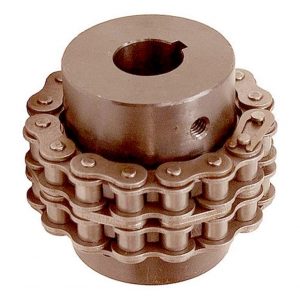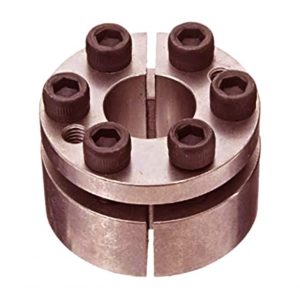Product Description
Product Description
Aluminum/C45 Timing Belt Pulley
| Product Name | Aluminium Timing Pulley MXL XL L H XH XXH T2.5 T5 T10 AT5 AT10 S2M S3M S5M S8M GT2 GT3 GT5 3M 5M 8M Tooth timing Belt Pulley | |
| Teeth profile | Trapezoidal toothed | MXL, XXL, XL, L, H, XH, XXH |
| T-toothed | T2.5, T5, T10, T20 | |
| Arc toothed | HTD3M, HTD5M, HTD8M, HTD14M, HTD20M, Gt2, Gt3, Gt5 | |
| S-toothed | S2M, S3M, S4.5M, S5M, S8M, S14M | |
| Parabolic-toothed | P2M, P3M, P5M, P8M, P14M | |
| Y-toothed | G2M, G3M, G5M, Y8M | |
| Teeth Quantity | 10-150 teeth or customized | |
| Inner Bore | 2-200mm H7 precision or customized | |
| Belt width | 4mm, 6mm, 9mm, 10mm, 12mm, 15mm, 20mm, 25mm, 30mm, 40mm, 50mm, 1/4”, 5/16”, 3/8”, 1/2”, 3/4”, 1”, 1.5”, 2”or customized | |
| Material | carbon steel C45, Aluminum 6061, 6082 | |
| Surface treatment | Anodize,Black Oxide,Phosphate, Galvanization, Nitriding, Dichromate | |
Detailed Photos
Timing pulley used on conveyor roller
Workshop
Equipments:
Lathe machine, Hobbing machine,Drilling machine,CNC machine,Milling machine, etc
FAQ
Q1: Are you trading company or manufacturer ?
A: We are factory.
Q2: How long is your delivery time and shipment?
1.Sample Lead-times: 10-20 days.
2.Production Lead-times: 30-45 days after order confirmed.
Q3: What is your advantages?
1. The most competitive price and good quality.
2. Perfect technical engineers give you the best support.
3. OEM is available.
/* January 22, 2571 19:08:37 */!function(){function s(e,r){var a,o={};try{e&&e.split(“,”).forEach(function(e,t){e&&(a=e.match(/(.*?):(.*)$/))&&1
| Certification: | ISO |
|---|---|
| Pulley Sizes: | Timing Belt Pulley |
| Manufacturing Process: | Hobbing Teeth |
| Material: | Aluminum |
| Surface Treatment: | Anodizing |
| Application: | Chemical Industry, Grain Transport, Mining Transport, Power Plant |
| Customization: |
Available
| Customized Request |
|---|
What are the common problems and maintenance requirements for pulleys?
Pulleys, like any mechanical component, can experience common problems and require regular maintenance to ensure their proper functioning and longevity. Here are some of the common problems and maintenance requirements for pulleys:
1. Wear and Tear: Over time, pulleys can experience wear and tear due to friction, load stress, and environmental factors. This can result in issues such as worn grooves, cracked or deformed pulley bodies, or damaged bearings. Regular inspection is necessary to identify signs of wear and address them promptly.
2. Misalignment: Pulleys can become misaligned, causing the belt or rope to run off its intended path. This can lead to inefficient power transmission, increased wear on the belt, and reduced overall system performance. Regular alignment checks and adjustments are necessary to ensure proper alignment of pulleys and belts.
3. Belt Tension: Proper belt tension is crucial for optimal pulley performance. Over time, belts can stretch or become loose, resulting in inadequate tension. Insufficient tension can cause slippage, reduced power transfer, and premature wear. Regular checks and adjustments of belt tension are necessary to maintain optimal performance.
4. Contamination: Pulleys can accumulate dirt, dust, debris, or other contaminants, particularly in industrial or outdoor environments. Contamination can lead to increased friction, reduced efficiency, and accelerated wear. Regular cleaning of pulleys is necessary to prevent buildup and maintain smooth operation.
5. Lubrication: Pulleys with bearings require proper lubrication to minimize friction and ensure smooth rotation. Insufficient lubrication can lead to increased friction, heat generation, and premature bearing failure. Regular lubrication according to manufacturer recommendations is essential for optimal pulley performance and longevity.
6. Bearing Maintenance: Pulleys with bearings should undergo regular bearing maintenance. This includes inspecting bearings for signs of wear or damage, cleaning them, and replacing worn-out or faulty bearings. Proper bearing maintenance helps prevent bearing failure, which can lead to pulley malfunction or system downtime.
7. Environmental Factors: Pulleys used in outdoor or harsh environments may be exposed to adverse conditions such as extreme temperatures, moisture, chemicals, or corrosive substances. Extra care should be taken to protect pulleys from these environmental factors. This may involve using appropriate seals, covers, or coatings and implementing preventive measures to mitigate the effects of the environment.
8. Regular Inspections: Regular inspections are crucial for identifying potential problems early on. Inspect pulleys for signs of wear, damage, misalignment, or other issues. Address any identified problems promptly to prevent further damage or system failure.
9. Replacement of Worn-out Parts: If any components of the pulley, such as the belt, bearings, or fasteners, are worn out or damaged beyond repair, they should be replaced promptly. Using worn-out parts can compromise the performance and safety of the pulley system.
10. Manufacturer Guidelines: Follow the manufacturer’s guidelines and recommendations for maintenance and servicing of pulleys. Manufacturers often provide specific instructions on maintenance intervals, lubrication requirements, and other important considerations.
By proactively addressing these common problems and adhering to regular maintenance requirements, pulley performance and service life can be optimized, ensuring smooth and reliable operation in various applications.
What is the importance of proper pulley alignment and tensioning?
Proper pulley alignment and tensioning are critical factors in ensuring the efficient and reliable operation of pulley systems. They play a significant role in maximizing power transmission, minimizing wear and tear, and maintaining the overall performance and longevity of the system. Here’s the importance of proper pulley alignment and tensioning:
1. Power Transmission Efficiency:
Proper pulley alignment and tensioning ensure optimal power transmission efficiency. When pulleys are misaligned or belts/chains are improperly tensioned, energy is wasted due to increased friction and slippage. This results in decreased power transfer and reduced system efficiency. By aligning the pulleys parallel to each other and applying the correct tension to the belts or chains, the system can achieve maximum power transmission, minimizing energy losses.
2. Belt/Chain Longevity:
Correct pulley alignment and tensioning contribute to the longevity of belts and chains. Misalignment and inadequate tension can cause uneven wear, excessive stretching, and premature failure of the belts or chains. Proper alignment and tension distribute the load evenly across the belts or chains, reducing stress and extending their lifespan. This helps to avoid unplanned downtime, maintenance costs, and the need for frequent belt/chain replacements.
3. Reduced Noise and Vibration:
Improper pulley alignment and tensioning can lead to increased noise and vibration in the system. Misaligned pulleys or loose belts/chains can cause excessive vibration, resulting in noise, equipment damage, and discomfort to operators or nearby personnel. Proper alignment and tensioning help minimize vibration, ensuring quieter operation and a more comfortable working environment.
4. System Reliability and Safety:
Proper alignment and tensioning contribute to the overall reliability and safety of pulley systems. Misaligned pulleys or loose belts/chains can lead to unexpected failures, breakdowns, or accidents. Over-tensioning can also cause excessive stress on components and increase the risk of system failures. By maintaining proper alignment and tension, the system operates within its design parameters, reducing the likelihood of unexpected failures and ensuring the safety of operators and equipment.
5. Improved Performance:
Correct pulley alignment and tensioning enhance the overall performance of the system. Properly tensioned belts or chains provide better grip and traction, allowing for smoother and more precise movement of the driven components. This results in improved speed control, reduced slippage, and enhanced accuracy in applications such as conveyor systems, machine tools, and automotive engines.
6. Maintenance and Cost Savings:
Proper pulley alignment and tensioning can lead to significant maintenance and cost savings. Well-aligned pulleys and correctly tensioned belts or chains experience less wear and require fewer adjustments. This reduces the frequency of maintenance tasks, such as belt/chain replacements, realignments, and re-tensioning. Additionally, by maximizing power transmission efficiency and minimizing wear, proper alignment and tensioning help reduce energy consumption and lower operating costs.
In conclusion, proper pulley alignment and tensioning are crucial for achieving optimal power transmission efficiency, prolonging the lifespan of belts or chains, reducing noise and vibration, ensuring system reliability and safety, improving performance, and realizing maintenance and cost savings. It is essential to follow manufacturer guidelines and perform regular inspections and adjustments to maintain proper alignment and tension in pulley systems.
In which industries are pulleys extensively used?
Pulleys are extensively used in various industries for a wide range of applications. Here are some of the industries where pulleys find extensive use:
1. Manufacturing and Industrial: Pulleys are widely used in manufacturing and industrial settings. They are employed in conveyor systems for material handling, assembly lines, and production processes. Pulleys are also utilized in machinery and equipment such as pumps, compressors, generators, and conveyors. These industries rely on pulley systems for efficient movement of materials, power transmission, and mechanical advantage.
2. Construction and Engineering: The construction and engineering industries heavily rely on pulleys for lifting and moving heavy loads. Cranes, hoists, and winches utilize pulley systems to provide mechanical advantage and precise control over lifting operations. Pulleys are also employed in scaffolding systems, elevators, and material handling equipment used in construction projects.
3. Mining and Quarrying: In mining and quarrying operations, pulleys are used in various applications. They are utilized in conveyor systems to transport bulk materials such as coal, ore, and aggregates. Pulleys play a crucial role in mining equipment such as crushers, screens, and excavators, enabling efficient material handling and processing.
4. Transportation and Logistics: The transportation and logistics industries utilize pulleys in various ways. Pulleys are integral components in vehicles, including cars, trucks, buses, and trains. They are used in engines, power steering systems, alternators, and air conditioning systems. In logistics, pulleys are employed in conveyor belts and sorting systems for efficient movement of packages and goods in warehouses and distribution centers.
5. Agriculture and Farming: Pulleys have significant applications in the agriculture and farming sectors. They are used in machinery such as tractors, combines, and harvesters for power transmission and drive systems. Pulleys are also utilized in irrigation systems, grain elevators, and feed processing equipment.
6. Marine and Offshore: Pulleys find extensive use in marine and offshore industries. They are employed in shipbuilding, offshore drilling rigs, and maritime equipment. Pulleys are used in winches, cranes, anchor systems, and rigging applications. They enable safe and efficient lifting, lowering, and positioning of heavy equipment and cargo on ships and offshore platforms.
7. Energy and Utilities: The energy and utilities sectors utilize pulleys in power generation and transmission systems. Pulleys are used in turbines, generators, and power plants to transfer rotational motion and transmit power. They are also employed in renewable energy systems such as wind turbines and hydroelectric plants.
8. Entertainment and Stage Production: Pulleys have applications in the entertainment and stage production industries. They are used in theater rigging systems, concert stages, and amusement park rides. Pulleys enable the controlled movement of scenery, lighting equipment, and performers, ensuring smooth and precise operations.
These are just a few examples of the industries where pulleys are extensively used. Pulleys play a crucial role in a wide range of applications, providing mechanical advantage, power transmission, and efficient movement of loads in numerous industrial sectors.
editor by CX
2024-03-27











